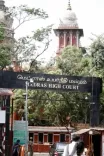Severe Cold Wave Engulfs Kashmir

Srinagar, Dec 31 (NationPress) The cold wave has significantly intensified across Jammu and Kashmir, as Srinagar reported a minimum temperature of -3.5 degrees on Tuesday.
The Meteorological (MeT) department has predicted an intense cold wave lasting for the next four to eight days.
A statement from the MeT department indicated, “Generally cold dry weather is expected on December 31. Two western disturbances (WD) in quick succession are anticipated to impact J&K and neighboring areas starting from January 1. On January 1-2 (Weak WD): Generally cloudy with light snow expected at scattered locations from the evening of the 1st to the morning of the 2nd. From January 3-6 (Moderate WD): Generally cloudy with light to moderate rain (in the plains of Jammu) and snow at numerous locations in J&K, peaking on January 4 and 5.”
The department has also released an advisory stating, “Cold wave conditions may prevail in isolated areas on December 31. Given the forecast of snowfall, sub-zero temperatures, and icy road conditions (in both plains and higher reaches), it is recommended that tourists, travelers, and transporters adhere to the Admin/Traffic advisory. There is a potential for heavy snow in isolated higher reaches on January 4 and 5,” as per the statement.
Srinagar recorded a minimum temperature of -3.5, Gulmarg -11.5, and Pahalgam -8.4 degrees.
In Jammu city, the minimum temperatures were recorded as follows: 7.1 degrees in Jammu, 5 in Katra, 1.5 in Batote, -2.3 in Banihal, and -1.4 in Bhaderwah.
The 40-day period of extreme cold known as ‘Chillai Kalan’, which commenced on December 21, will conclude on January 30.
Medical professionals are urging the public, especially the elderly and children, to take precautions against the harsh cold, as hypothermia along with respiratory issues has been a leading cause of mortality in the cold regions of the Valley.
Individuals are advised to limit their exposure to sub-zero temperatures whenever possible.
Recent reports indicate fatalities among high-risk patients, attributed by cardiologists to constricted blood vessels leading to myocardial infarction, heart attacks, and heart failures.









